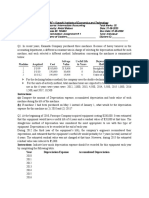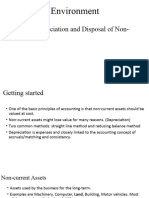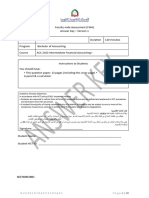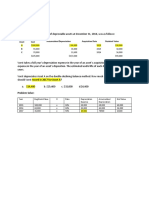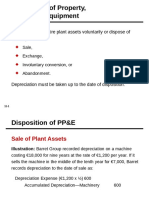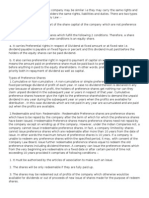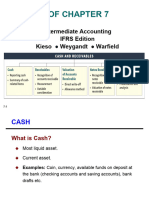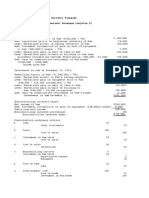0% found this document useful (0 votes)
42 views6 pagesT1 Week 8 Additional Practice Questions
The document contains a series of practice questions focused on depreciation and disposal of non-current assets, requiring calculations for various assets using both straight line and reducing balance methods. It includes scenarios for delivery vans, equipment, and forklifts, detailing costs, expected lifespans, and scrap values. Additionally, it addresses profit or loss on asset disposals and provides references for further reading on accounting principles.
Uploaded by
Alok LalCopyright
© © All Rights Reserved
We take content rights seriously. If you suspect this is your content, claim it here.
Available Formats
Download as PDF, TXT or read online on Scribd
0% found this document useful (0 votes)
42 views6 pagesT1 Week 8 Additional Practice Questions
The document contains a series of practice questions focused on depreciation and disposal of non-current assets, requiring calculations for various assets using both straight line and reducing balance methods. It includes scenarios for delivery vans, equipment, and forklifts, detailing costs, expected lifespans, and scrap values. Additionally, it addresses profit or loss on asset disposals and provides references for further reading on accounting principles.
Uploaded by
Alok LalCopyright
© © All Rights Reserved
We take content rights seriously. If you suspect this is your content, claim it here.
Available Formats
Download as PDF, TXT or read online on Scribd
/ 6



